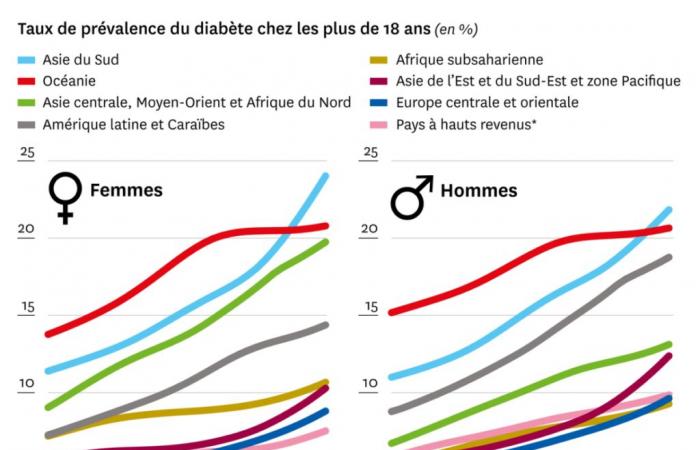According to a publication in The Lancet on November 13, the total number of people living with diabetes worldwide has doubled over the past thirty years, to approximately 828 million.
“This study is the first worldwide to look at the percentages of people with diabetes in different countries and the treatments used,” assure The Guardian. It brings together data from 1,108 population-representative studies, involving 141 million participants aged over 18.
Between 1990 and 2022, the rate of diabetes increased from 7% to 14% of the adult population, with a particularly strong increase in low- and middle-income countries. The areas where this rate exceeds 25% are the Pacific Islands, the Caribbean, the Middle East, North Africa and Malaysia, relays the Financial Times.
The lowest rates are observed in France, Denmark and Spain, for both women and men (between 2 and 4% for the former, between 3 and 5% for the latter). Uganda, Kenya, Malawi and Rwanda also have relatively low rates of diabetes among men (3-5%).
A chronic disease that could be avoided in certain cases
Diabetes is a chronic disease characterized by the presence of excess sugar in the blood. The two main types of diabetes are caused by different dysfunctions. The least common, type 1 diabetes, occurs because the pancreas no longer makes enough insulin. In its absence, cells can no longer properly use the sugar circulating in the blood.
According to the World Health Organization, more than 95% of people with diabetes have type 2 diabetes. It is a metabolic disorder that changes the way the body uses sugar for energy. If left untreated, it can lead to complications. But, very often, it can be avoided. Lack of physical exercise, excess weight and genetic predisposition are among the factors increasing the risk of developing type 2 diabetes.
[…] Read more on International Mail






